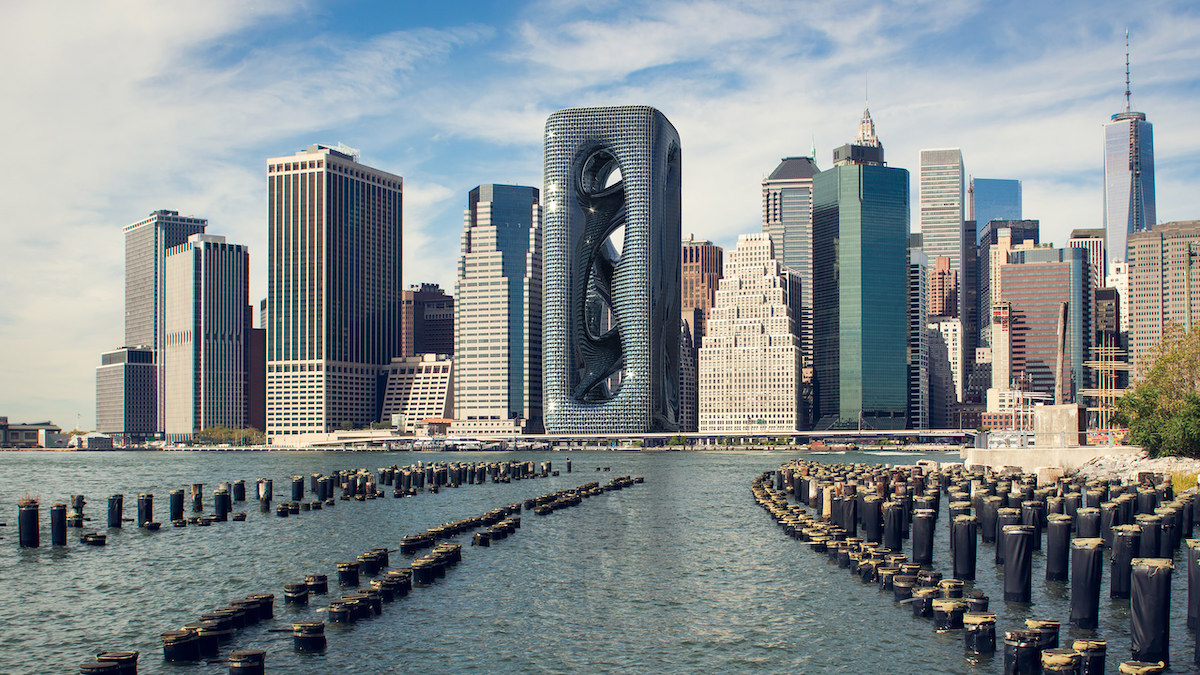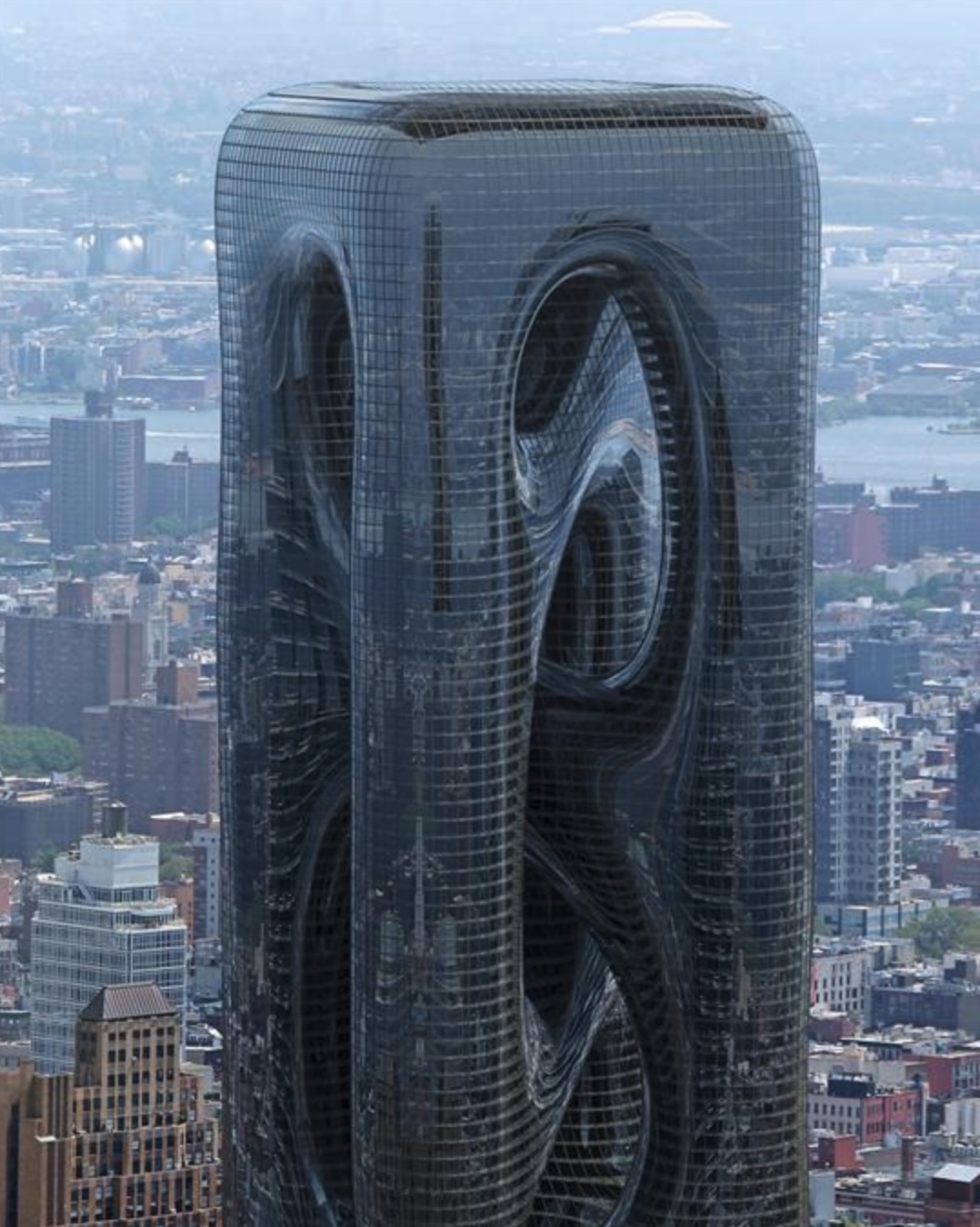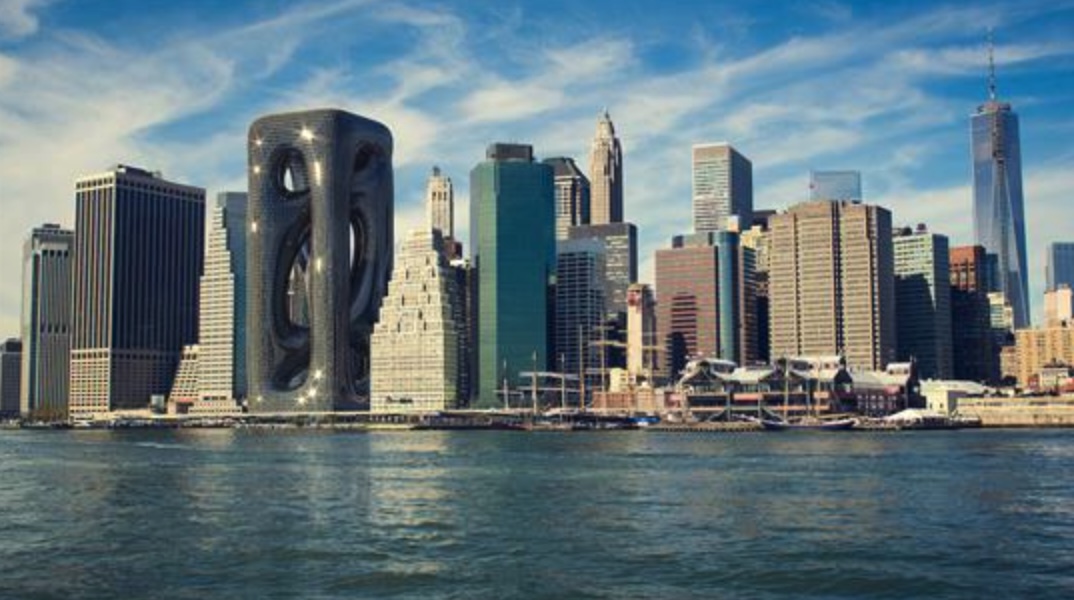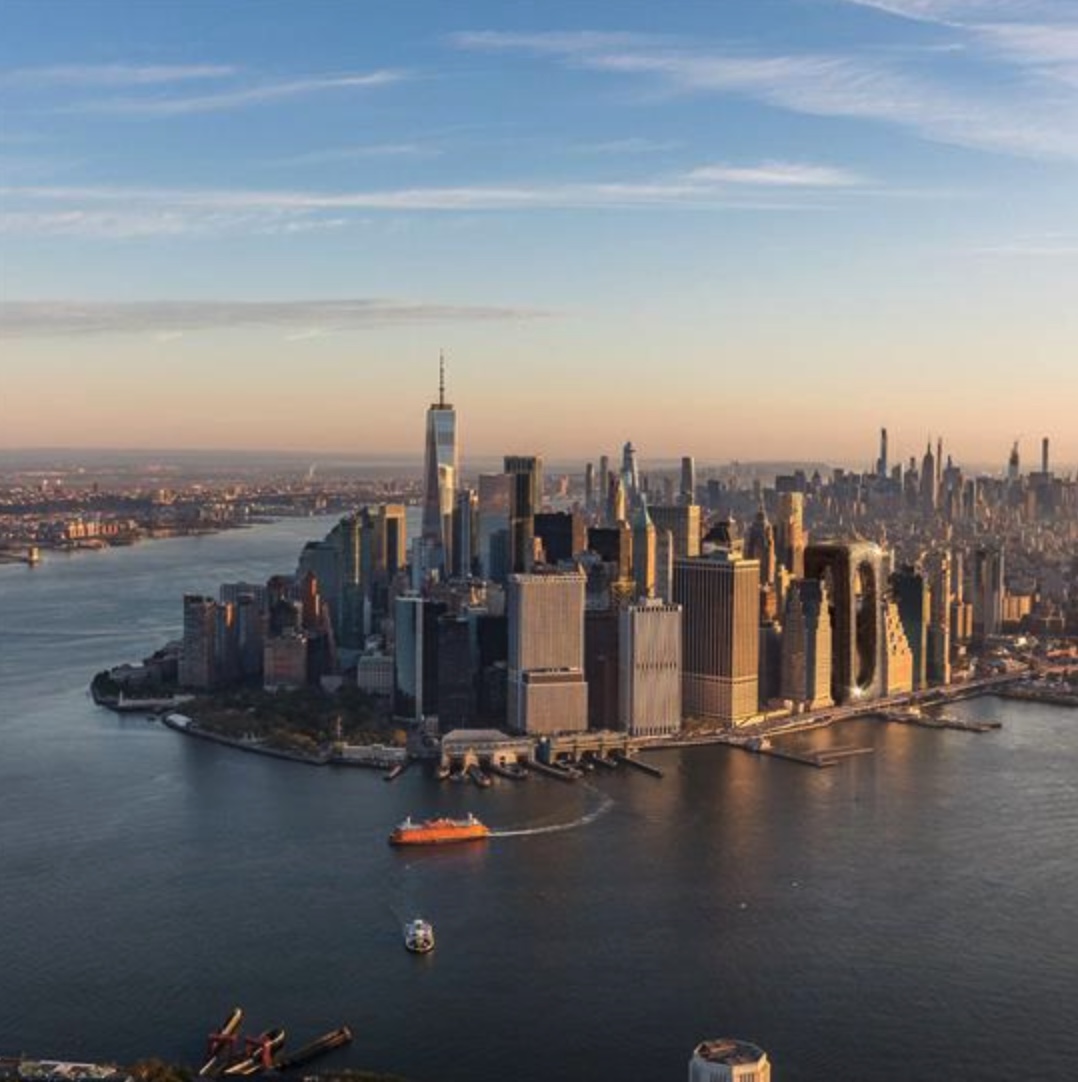
This biology-inspired skyscraper has been imagined for New York City
TURKISH architecture firm Hayri Atak Architectural Design Studio has imagined a striking skyscraper for New York City.
Called Sarcostyle Tower, the conceptual building would dramatically break with the language of other buildings in Manhattan - using biological concepts like anatomy and cells as its design inspiration - while remaining similar in terms of scale.
“When we examine it in general, the first impressive effect is that it creates an image in the mind that is tangent to all of the other neighbouring structures but does not exactly resemble any of them,” describes Hayri Atak in a press release.

Above: The tower's silhouette fits perfectly within New York's rectangular forms. Image courtesy of Hayri Atak Architectural Design Studio.
Visuals show the 210-metre skyscraper appearing to twist inside itself creating a series of dramatic voids.
These are meant to resemble sarcomeres, a complicated unit of striated muscle tissue.
The bridges that reach organically across the central void of the tower are meant to look like rod-shaped muscle fibres.
Seeking inspiration from biology (known as “biomimicry”) has become a more common practice in architecture, especially with conceptual pieces attempting to find creative solutions to long held problems.

Above and Below: The building would be a bold addition to the Lower Manhattan skyline. Images courtesy of Hayri Atak Architectural Design Studio.

In 2020, Paris-based architecture studio Rescubika proposed a 737-metre-high tower for New York City that would trap carbon emissions.
Designed to resemble a tree, the 160-floor skyscraper would have 36 wind turbines, 1,600 trees, 24,500 square metres of plant walls, and 7,000 square metres of photovoltaic façades.
Dubbed “The Mandragore”, this megatall residential building would use wooden materials and passive energy techniques, such as an air-ground heat exchanger, which uses underground pipes to capture heat from the ground.
Looking to nature to solve architectural problems may become more common as we seek new solutions to cool our buildings in warming climates.








